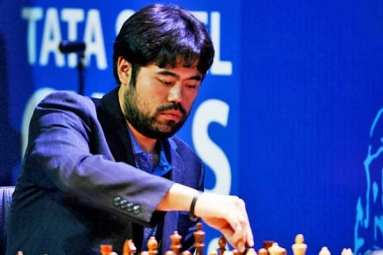
(Image source from: LEGO.com)
Chess, the most popular and challenging strategy game of all, beyond the shadow of doubt always remains a captivating game. Teaching kids how to play the board game spot on is never an easy task.
In many countries, Chess is recognized as a useful tool for developing creative thinking in children.
Don’t Overstrain Kids
It is advised not to hurry. Chess is a highly complex game with billions of possibilities and many rules. So, don’t overstrain your kids with information. Teach kids at the correct speed for them.
 (Image source from: WooChess)
(Image source from: WooChess)
However, speed will vary from child to child, so the educator must be alert to the subtle indicators that a child is ready to continue on to the next subject.
Don’t Buy Expensive Sets
Moreover, select suitable chess set for your child. It’s nonsense to buy an expensive wooden chess set when your child will start playing with it, starting to look into the beautiful shapes of each piece.
Buy a set with big plastic pieces which are beefy and let the child discover all the shades of the board the pieces.
 (Image source from: news.hamlethub.com)
(Image source from: news.hamlethub.com)
Additionally, it is important not to thrust all six pieces into a young child’s hands, explaining to him or her how they move in just a few minutes.
It is too much for most young or old children to grasp the whole strategy in one sitting. And, unfortunately, that’s how many children are taught and that might just be why some lose interest quickly! It’s too much for most young (or old) children to grasp in one sitting.
As an alternative, it is a good idea to break up the lessons into segments, isolating the game into component parts.
Pawn Is Not a Perfect Piece to Start
Many people begin their chess lessons by teaching the movement of the pawns. It seems logical at the time, but however, often it is not the perfect piece to start with and has been revealed to be a mistake.
That’s because the pawn is one of the most complex pieces! As such, it should be taught last. The rook’s movements are the easiest to grasp.
When breaking down all the aspects of a piece’s movements, there are many baby steps that can be applied. It’s much easier to learn these skills using just one piece on the board. So, start step-by-step with one piece after another instead of overwhelming children with all of them at once.
Benefits of Chess for Kids Academically
Teach your children the board game Before they start school. If parents teach children to play chess when they’re four or five, they will be fit for the school. Chess teaches children many basics, like problem-solving, focus, patience and follow-through.
Kids who play chess do not only have a higher IQ but they are also more creative. Especially, their discipline and concentration get better through chess which is key to success at school.
 (Image source from: Chess-Site.com)
(Image source from: Chess-Site.com)
Many children have problems trying to concentrate on one thing for a long time. The one-on-one chess lessons for kids are perfectly effective to train the attention span of a kid.
Benefits of Chess for Kids Socially
Chess doesn’t only help to train some academic skills, but it is also a very social game. Children learn to be patient and to wait for the opponent’s move.
Furthermore, they get confronted with rules which they have to abide by. Following concrete rules is difficult for many children so it is very meaningful to start learning it early.
Another great asset of chess is that kids begin to learn to deal with losses.
By Sowmya Sangam





















